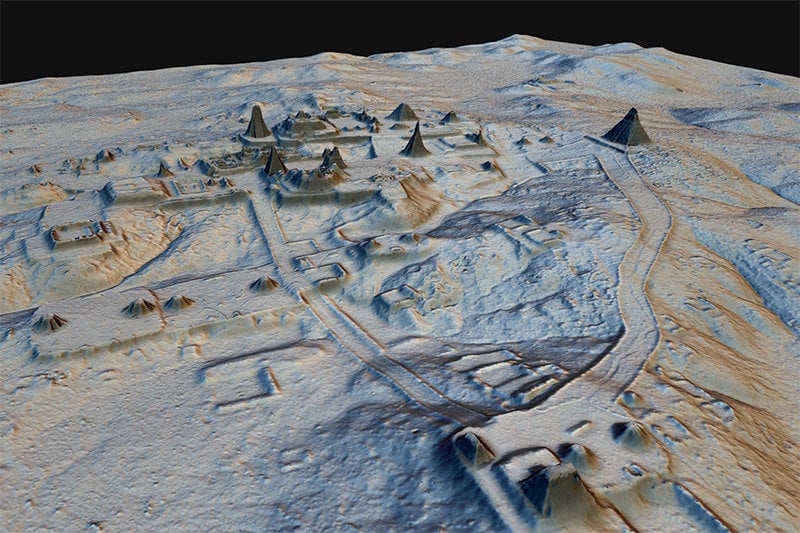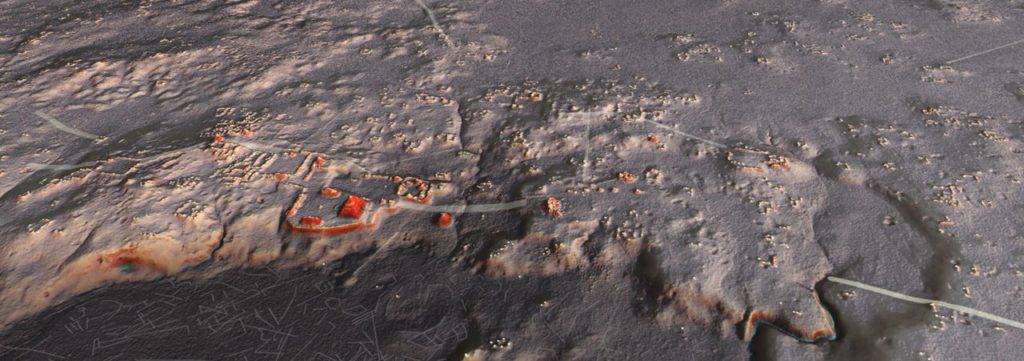Art World
Archeologists Have Discovered a Mysterious Maya Megalopolis Hidden Beneath the Guatemalan Jungle
Laser scanning technology has revealed more than 61,000 ancient structures.

Laser scanning technology has revealed more than 61,000 ancient structures.

Sarah Cascone

Researchers have discovered an ancient Maya megalopolis deep within the tropical forest of northern Guatemala after scanning the site with an advanced form of light detection and ranging technology known as LiDAR. The scans are the work of the Pacunam Lidar Initiative, which has been mapping an 810-square-mile area of the Maya Biosphere Reserve in Petén for the past two years.
The findings reveal the outlines of more than 61,000 ancient structures, including pyramids and palaces, in an interconnected network of dozens of cities. The results were first announced in February but the journal Science has now published laser-based imaging maps and analysis.
Flying 2,000 feet above the treetops, aircraft from the National Center for Airborne Laser Mapping equipped with LiDAR scanners make topographical readings using laser pulses linked to a GPS system, and produce three-dimensional maps of the surface below. The aerial scans are then combined to create a highly detailed digital landscape. “It identified features that I had walked over—a hundred times!” one of the paper’s authors, Francisco Estrada-Belli, told TechCrunch. “We’ve never been able to see an ancient landscape at this scale all at once.”

Representation of the archaeological site of Naachtun, Petén, at twilight. Image courtesy of the American Association for the Advancement of Science.
The scans show an extensive network of Maya roads linking towns and defensive fortifications that suggest a society frequently at war. There were also sophisticated irrigation and canal systems. LiDAR even discovered a massive pyramid so covered with vegetation it is invisible to the naked eye.
“LiDAR is revolutionizing archaeology the way the Hubble Space Telescope revolutionized astronomy,” Estrada-Belli told National Geographic. “With this new data it’s no longer unreasonable to think that there were 10 to 15 million people there—including many living in low-lying, swampy areas that many of us had thought uninhabitable.” Previously, most scholars had placed the population at a level closer to five million.

LiDAR technology is mapping the lost civilization of the Maya, revealing ancient settlements hidden in the jungle. Image courtesy of Luke Auld-Thomas and Marcello A. Canuto/PACUNAM.
“Seen as a whole, terraces and irrigation channels, reservoirs, fortifications and causeways reveal an astonishing amount of land modification done by the Maya over their entire landscape on a scale previously unimaginable,” he added, speaking to Phys.org. At its peak some 1,500 years ago, the Maya civilization, masters of mathematics and engineering, might have been more advanced than that of the ancient Greeks and Chinese.